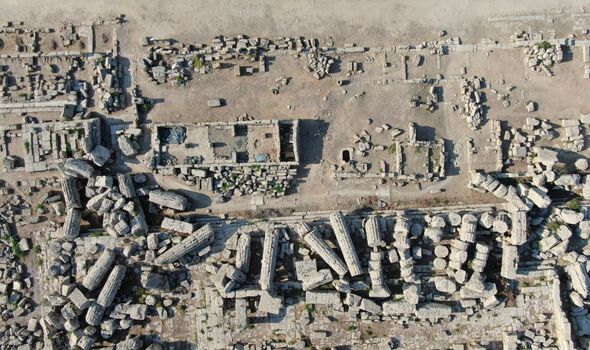Selinunte, the ancient city in the Greek-speaking areas of southern Italy known as Magna Graecia, was home to 30,000 inhabitants and covered an area of 670 acres at its peak, before 409 BC.
The southern quadrants of the city, towards the sea, served as the religious centre housing various temples and the Acropolis.
The city was founded in the seventh century BC, making it at least 2,600 years old. It was once one of the most prosperous and advanced centres of the Greek world in Sicily, according to Arkeonews. However, in 250 BC, during the First Punic War, the city was abandoned and its defences dismantled.
Temple C, found in this quadrant, was built in the Doric style around the mid-sixth century BC. It is decorated with motifs from Greek mythology, including depictions of Medusa, Perseus and Pegasus according to research from Cambridge University. Previous excavations here have uncovered hundreds of ancient seals, indicating that the temple likely served as an archive and was dedicated to Apollo – God of sun, light, music and prophecy.
In a recent study, archaeologists conducted excavations within the peribolos wall – a court enclosed by a wall in ancient Greek and Roman architecture – on the Acropolis to understand the perimeter of the religious centre.
The researchers, from the Institute of Fine Arts-NYU and the University of Milan, discovered a large monumental entrance to the northwest of the Acropolis, along with a room featuring a circular well that contained various coins and gold jewellery.
In a recent press statement issued by the Archaeological Park of Selinunte, archaeologists have also uncovered a small temple complex directly behind Temple C.
The structure is said to be rectangular in shape and lacking the typical colonnade design of other temples and shrines within religious centres. Officials say the new structure is about two-thirds the size of another site in the area, called Temple R.
The excavations have also provided new information on the ceremonies associated with the construction of Temple R. The archaeologist evidence suggests that the surrounding structures were torn down and demolished as part of a “purification” ritual.
An iron spear spire was also found at the site, which appears to have the top and edge of the blade removed as a symbolic act to “defunctionalise” the weapon.
The new discovery has been described as of “great value” by the advisor for Cultural Heritage and Sicilian Identity, Francesco Paolo Scarpinato.
The archaeologists hope that the new discoveries will provide a better understanding of the evolution of Selinunte. The new temple could provide important information about religious practices and the spatial organisation of the ancient city.
